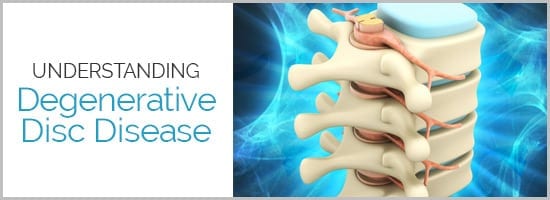
Degenerative disc disease is not actually a disease. Rather, the term is used to describe the changes that occur when spinal discs age.
Your spinal discs are soft and exist to separate the vertebrae in the spine. They help the spine to bend and twist and act as shock absorbers. As you age, there is less fluid retained in the discs. This leads to less flexibility. Tiny cracks can develop in the outer layer of the discs and cause the jelly-like interior of the discs (the nucleus) to leak out and bulge.
Degenerative disc disease can occur anywhere in the spine, but is most common in the neck and lower back. You are at an increased risk of degenerative disc disease if you smoke, are obese, have had a previous back injury, or do heavy lifting or other regular physical work.
Symptoms
Some people with degenerative disc disease experience no pain. The exact symptoms that you experience can depend on which area of the spine is affected. If you have degenerative disc disease in the neck, you may experience neck or arm pain. If it is in the lower back, you may have pain in your back, buttocks, or legs. The pain, which gradually worsens, can make it difficult to do normal activities and worsen with movements like bending. Some patients also experience numbness or tingling in their limbs.
Degenerative disc disease can contribute to secondary conditions such as herniated discs, spinal stenosis, and osteoarthritis. Bone spurs can also develop due to the spine becoming less stable with less padding, resulting in pressure on the spinal cord.
Degenerative disc disease is diagnosed with a physical exam and imaging tests.
Treatment
Ice therapy, heat therapy, and non-steroidal anti-inflammatory drugs can be used to reduce pain associated with degenerative disc disease. Other conservative treatments can include physical therapy and strength exercises. Other treatments may be needed in order to target secondary issues like spinal stenosis and herniated discs.
In more severe cases, surgery may be performed in order to remove or repair a damaged disc.

